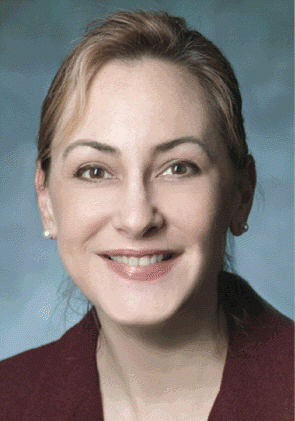Head and neck cancer specialists are increasingly advocating surgery alone-or at least as first-line treatment. Often, patients with small tumors, and even some with larger ones, can avoid the well-known and significantly life-altering toxicity of chemoradiation.
Is this a reasonable clinical idea? It’s a huge question, said Jonas T. Johnson, MD, Chairman of the Department of Otolaryngology at University of Pittsburgh School of Medicine.
Christine Gourin, MD, Associate Professor and Director of the Clinical Research Program in Head and Neck Cancer at Johns Hopkins School of Medicine in Baltimore, agreed. The major determinants of whether surgery is an effective treatment are histology and stage. If the tumor is low-grade and/or early-stage, surgery alone can be curative, she said.
 For small tumors, surgery is very efficient and cost-effective, and it allows patients to get back to their usual lives faster than with chemoradiation. Surgery carries few lingering after-effects, and there are lots of arguments in its favor.
For small tumors, surgery is very efficient and cost-effective, and it allows patients to get back to their usual lives faster than with chemoradiation. Surgery carries few lingering after-effects, and there are lots of arguments in its favor.
-Bruce T. Haughey, MBChB
Bruce H. Haughey, MBChB, Kimbrough Professor of Otolaryngology-Head and Neck Surgery and Director of the Head and Neck Cancer Center at Washington University School of Medicine in St. Louis, added that this is a serious debate. For small tumors, surgery is very efficient and cost-effective, and it allows patients to get back to their usual lives faster than with chemoradiation. Surgery carries few lingering after-effects, and there are lots of arguments in its favor.
In a Nutshell
We never give chemotherapy or chemoradiation (CRT) for stage 1 or stage 2 disease, simply because it is not required, said Dr. Johnson. The biologic costs are too great, and there are no data to show that chemo provides a benefit in early-stage disease. It’s just too much treatment.
For example, in some patients, endoscopic resection of the larynx, which can be done on an outpatient basis, is more effective and efficient than six weeks of radiation.
Dr. Gourin agreed with him about early laryngeal cancer but warned that all head and neck cancer patients have a high lifelong risk of second such cancers. The ability to hold radiation in reserve for the future is a huge potential benefit of primary surgery for early-stage cancer, she noted.
But what about patients who want chemo and/or radiation after surgery to destroy micrometastases? Dr. Johnson replied, Currently, we have no way to find metastatic disease before it becomes detectable, so there’s no point in giving highly toxic drugs for the very unlikely event of distant metastasis. Thus, only patients with advanced tumors should be offered adjuvant CRT.
He acknowledged that it is difficult for patients to live with uncertainty, but when the risk is so low, it’s more dangerous to overtreat.
CRT appears to work for stage 3 tumors. It is effective in about two-thirds of patients-about the same percentage as surgery combined with radiation, especially in cancer of the larynx, any treatment for which produces significant side effects. However, surgery carries more mutilating effects than CRT. Therefore, the latter has become the therapy of choice for stage 3 patients.
In stage 4 disease, CRT may not restore function. Therefore, surgical resection plus adjuvant CRT may be more appropriate. Patients with advanced adenopathy usually require CRT, but the jury is still out about surgery adding benefit for them.
That’s it in a nutshell, but of course, the decision to choose a treatment is more complicated than that. Physicians are responsible for understanding the differences among types of treatment for various stages and characteristics of head and neck cancer, and they need to guide and teach patients to weigh the appropriate choices, said Dr. Johnson.
 The major determinants of whether surgery is an effective treatment are histology and stage. If the tumor is low-grade and/or early-stage, surgery alone can be curative.
The major determinants of whether surgery is an effective treatment are histology and stage. If the tumor is low-grade and/or early-stage, surgery alone can be curative.
-Christine Gourin, MD
Oral and Oropharyngeal Cancers
For cancers in the oral cavity, surgery alone may be sufficient treatment and may, in fact, offer the best chance of cure. CRT is not effective as first-line therapy, said Dr. Gourin. But, she added, You have to address the lymph nodes and dissect them during surgery. If there is no evidence of lymph node involvement and if you can achieve clear margins, surgery can be the sum of treatment.
But if, as is common, the cancer has spread to the nodes, you already have stage 3 or maybe stage 4 disease, and then you have to give adjuvant radiation or CRT. For oropharyngeal cancers, if you know beforehand that you’re facing stage 3 or 4 disease, then CRT as primary treatment is appropriate because there’s no getting around the need for radiation therapy. Unlike oral cancer, these tumors tend to be particularly radiosensitive.
In general, though, we try to avoid radiation because it can cause terrible, and permanent, side effects-for example, xerostomia, swallowing problems, and sometimes such severe fibrosis that patients can become feeding tube-dependent. And what’s more, chemotherapy tends to make tissue more radiosensitive, thus exacerbating the effect of radiation.
Surgery provides prognostic information, such as histologic aggression and lymph node involvement, that can guide the decision about adjuvant radiation or CRT.
For patients with mouth and throat cancer, many surgeons use the daVinci Surgical System to see if outcomes improve. (daVinci is FDA-approved for surgery on the torso, but not for head and neck procedures.)
Use of the robot reduces trauma, allows for complete tumor removal, and preserves voice and swallowing function. Moreover, the robotic arms are introduced through the mouth, thus obviating the need for incision. It has other advantages as well:
- Operative time is shorter.
- Its three arms (cameras and fiberoptic light) provide an advantage over a two-armed human.
- The robot’s command center contains a three-dimensional computer monitor, thus providing a real but magnified view of the surgical field.
- The double telescopic endoscope allows a closer view of the surgical site than one could get with unaided vision.
- Unlike other endoscopic systems, it does not require counterintuitive motions by the surgeon. It translates natural hand movements into the robot’s corresponding micro-movements. Thus, there is less chance for error.
- The robot’s computer eliminates even the smallest hand tremors.
Surgery for Larger Tumors
Dr. Haughey talked about the efficacy of surgery for larger tumors (T3 and T4) of the oral cavity, oropharynx, larynx, and hypopharynx. Ever since a 1991 study of surgery versus CRT, in which the results were equivocal, unfortunately there have been no further trials comparing the two treatment modalities.
Rather, pharmaceutical companies began sponsoring study after study of various oncologic drug cocktails-with and without concurrent radiation. Because there was so much money at stake and because some physicians leapt, lemming-like, over this ‘cliff’ of CRT, surgical treatment was largely ignored in clinical trials as well as the practice patterns of many cancer centers. But slowly, first in Europe and then in this country, with growing enthusiasm and success, surgeons began procedures on larger tumors of the upper aerodigestive tract with minimally invasive approaches.
Laser microsurgery has been a major part of that effort. Although laser endoscopy was developed in the 1970s, only in the last decade have these cost-effective techniques been used for larger tumors, Dr. Haughey said.
He went on to say that transoral laser microsurgery (TLM) can be used even in stage 3 and 4 disease of the larynx and hypopharynx (where the robot cannot yet be used) with excellent oncologic outcome, minimal hospital stay, and low morbidity. Moreover, TLM patients do not usually require a tracheostomy (in open surgery, about 80% of patients do). It is not a simple procedure, however. It requires the right equipment, well trained staff, and pathologists familiar with head and neck anatomy.
Dr. Haughey said that success rests on three major factors. With fiberoptics we can light the surgical field really well; the microscope provides needed magnification, and the dry cutting of the laser keeps the field clear of obscuring blood.
Using a microscope during the procedure results in a high level of precision in removing the entire tumor. We use the laser to cut out the tumor piece by piece until it’s completely excised, without disrupting much normal tissue.
 Physicians are responsible for understanding the differences among types of treatment for various stages and characteristics of head and neck cancer, and they need to guide and teach patients to weigh the appropriate choices.
Physicians are responsible for understanding the differences among types of treatment for various stages and characteristics of head and neck cancer, and they need to guide and teach patients to weigh the appropriate choices.
-Jonas T. Johnson, MD
The control rate is very high, and we can protect surrounding structures to a great degree, greater than with open neck procedures. We also have the benefit of step-by-step control of margins, which is every cancer surgeon’s goal.
Given contemporary compelling data suggesting this is an effective cancer-curing procedure that minimizes side effects, we are probably justified in offering it to virtually any patient who is suitable for the technique, he said.
A New Study of TLM for Advanced Cancer
At the January 2009 meeting of the Combined Southern and Middle Sections of the Triological Society, Dr. Haughey, Jason Rich, MD, and three colleagues presented results of a prospective phase 2 study of TLM for patients with advanced oropharyngeal cancer.
The 84 previously untreated patients received TLM with or without adjuvant therapy for stage 3 (15%) or 4 (85%) disease and followed for a minimum of two years, with median follow-up of 49 months.
Seventy-two patients had adjuvant radiation, 23 of whom also received chemotherapy. Disease-free and overall survival were 90% at two years and 83% at five years. Five patients had major, nonfatal surgical complications requiring repeat surgery, and six developed disease recurrence, mostly at distant sites.
Although primary tumor stage and positive margins significantly affected survival, adjuvant chemotherapy did not add any advantage for any outcome. (Interestingly, patients who were HPV-positive had better outcomes than those who were HPV-negative.) Seventy-four patients needed a feeding tube, but only four out of five patients who required it permanently had it placed during or after CRT.
As a result of this study, Dr. Haughey concluded that TLM with or without adjuvant treatment is an effective strategy for locoregional control (96.3%) and functional organ preservation in advanced oropharyngeal cancer. Chemotherapy, with its attendant toxicity, is probably unnecessary, even in patients with advanced, HPV-positive disease.
©2009 The Triological Society
Leave a Reply